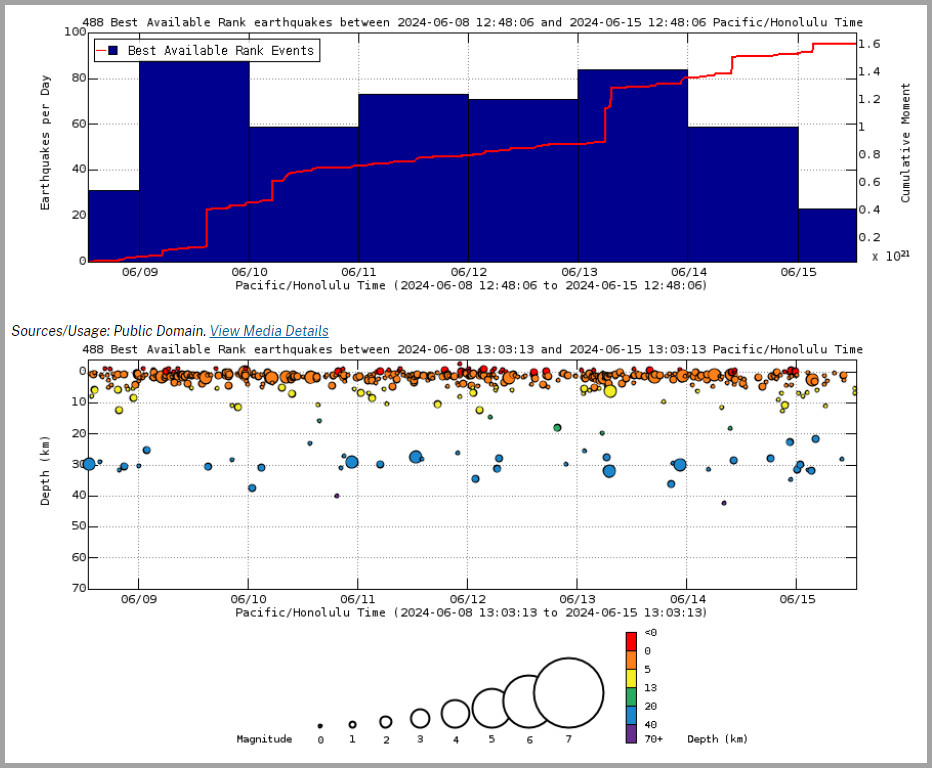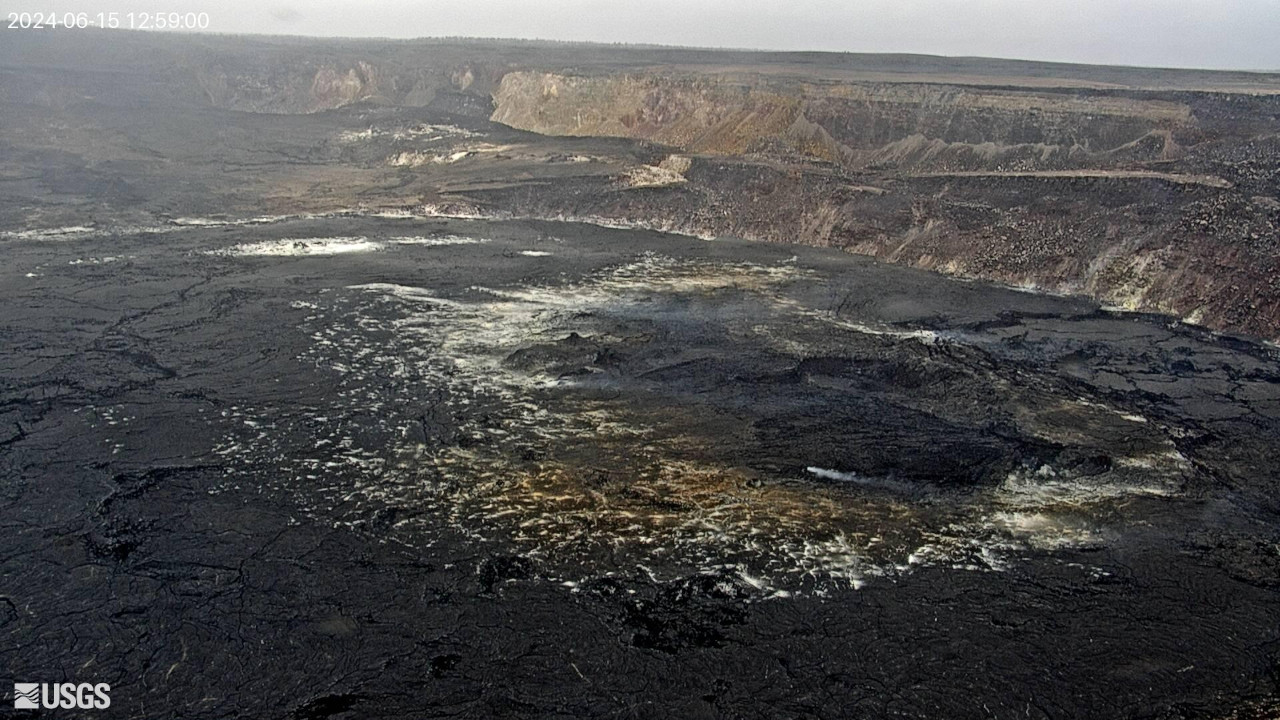(BIVN) – Kīlauea is not erupting, and the USGS Volcano Alert Level remains at ADVISORY.
Things are quiet at the site of the June 3rd eruption on the upper Southwest Rift Zone, where glow from fissure vents is no longer visible in webcam imagery and seismic activity remains low.
On Saturday, the USGS Hawaiian Volcano Observatory noted “earthquake counts and rates of inflationary ground deformation in the summit and upper rift zones remain somewhat elevated.” Scientists have been saying that any additional increase in seismicity and/or deformation “could result in new eruptive episodes within or near the summit region.”
Closures due to volcanic gas and other hazards remain in effect within Hawaiʻi Volcanoes National Park, where Maunaiki Trail and Kaʻū Desert Trail are currently off limits.
“Near the recent eruption sites, minor to severe ground fractures and subsidence features may continue to widen and offset, may have unstable overhanging edges, and should be avoided,” the USGS HVO wrote.
A magnitude 4.1 earthquake that occurred on Friday afternoon deep offshore of the Kaʻū district had no apparent impact on either Mauna Loa or Kīlauea volcanoes. Scientists reported the earthquake was a part of the ongoing deep Pāhala swarm.
From the USGS HVO on Saturday:
Summit and Upper Rift Zone Observations: Rates of seismicity beneath the summit, upper East Rift Zone, and upper Southwest Rift Zone were slightly elevated over the past day. About 25 earthquakes occurred over the past 24 hours. Earthquakes were mostly located beneath the south caldera region and upper East Rift Zone, at depths of 1.5-3 km (1–1.8 miles), with magnitudes under M2.5. Inflationary ground deformation of the summit continued over the past day. The Uēkahuna tiltmeter northwest of the summit recorded overall inflation of approximately 3 microradians over the past 24 hours. The Sand Hill tiltmeter southwest of the summit recorded approximately 3 microradians of inflation over the past 24 hours. The most recent summit SO2 emission rate measured was approximately 50 t/d on June 10, 2024; accordingly, total SO2 emissions from the summit and recent eruption site are likely less than 200 t/d.

Above Top: Number of earthquakes per day during the past week (blue bars). The red line is the cumulative moment (energy) release. Bottom: Depth of earthquakes during the past week in the area shown on the map above. Depth is reported relative to sea level, which is equal to a depth of zero on the above plot. On both figures, circle-size represents magnitude, and color indicates depth. (USGS graphs)
Lower Rift Zone Observations: Rates of seismicity and ground deformation beneath the middle and lower East Rift Zone and lower Southwest Rift Zone are low. Eruptive activity and unrest have been restricted to the summit and upper rift zone regions. Measurements from continuous gas monitoring stations downwind of Puʻuʻōʻō in the middle East Rift Zone remain below detection limits for SO2, indicating that SO2 emissions from Puʻuʻōʻō are negligible.
Analysis: Following the June 3 eruption, magma has been repressurizing the storage system beneath Halemaʻumaʻu and the south caldera region, activating earthquakes in the upper East Rift Zone and in the caldera south of Halemaʻumaʻu. At this time, it is not possible to say whether this increase in activity will lead to an intrusion or an eruption in the near future, or simply continue as seismic unrest at depth. Changes in the character and location of unrest can occur quickly, as can the potential for eruption, but there are no signs of imminent eruption at this time.
The USGS HVO says it will continue to provide daily updates for Kīlauea volcano. Should volcanic activity change significantly, a Volcanic Activity Notice will be issued.


by Big Island Video News1:11 pm
on at
STORY SUMMARY
HAWAIʻI VOLCANOES NATIONAL PARK - Earthquake counts and rates of inflationary ground deformation in the summit and upper rift zones remain somewhat elevated, while the volcano is not erupting.